The reception of Japanese cinema in the West has always existed within a confined space. Neither based on domestic commercial success nor on the reception of Japanese critics, what entered the Western canon of Japanese classics was chosen solely based on its availability at international film festivals. In the 1950s and early 1960s, Akira Kurosawa and Kenji Mizoguchi were singled out as Japan’s two greatest masters of cinema.
When in the 1970s the work of Yasujiro Ozu was discovered in the West, critics began to speak of “The Big Three of Japanese Cinema”. Without a doubt, all three of them, Ozu, Mizoguchi and Kurosawa, were indeed highly important directors whose oeuvre had a tremendous impact on the Japanese film industry.
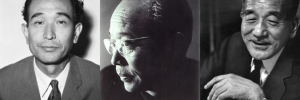
However, if one had consulted the critical consensus of Japanese reviewers at that time, another artist would, without a doubt have emerged as Japan’s most celebrated director: Tadashi Imai, a left-leaning director of socially critical films who not only won more Kinema Junpo Awards (Back then, Japan’s most respected cinema award) than all of “The Big Three” but whose films enjoyed immense popularity among Japanese critics.
Of course, this narrow-mindedness only applies to what we might call “Mainstream Film Criticism.” The reception of Japanese cinema in the West has always been distinguished by a few brave individuals, including Donald Richie, Stuart Galbraith IV or Alexander Jacoby, who dared to look behind the alleged exoticism of Japanese cinema. Indeed, the process of discovering the great artists of Japanese cinema has not ended yet and continues on being as relevant and important as it always has been.
Yet, while more Japanese director receive their deserved praise based on the quality of their work, the reception of Japanese films based on their commercial success is still largely neglected. Despite the early effort by Donald Richie and Joseph L. Anderson, whose pioneering work, “The Japanese Cinema: Arts and Industry” (1959), attempted to recount not only Japan’s greatest cinematic achievements but also the commercial framework behind them, few scholars since then have attempted to explore the industrial aspects of Japanese cinema.
While most producers granted their directors considerably more artistic freedom than their American counterparts had ever dared to, a contract director’s style was always shaped by a producer-enforced company style. Thus, the Japanese film industry was as much distinguished by its artistic quality as by its mass production of films. In the end, it was exactly this mass production system, coupled with the individual talents of its directors, led to the “Golden Age” of Japanese cinema. Something still neglected in Western circles where commercial success is often confused with artistic quality.
In the West, for example, the myth that Akira Kurosawa’s “Seven Samurai” (Shichinin no samurai, 1954) became Japan’s most successful film after its release in 1954 is still thoughtlessly adopted. It’s true that “Seven Samurai” was Japan’s most expensive film ever made. A record, however, which was broken a few years later when Kunio Watanabe’s nationalistic war epos “Emperor Meiji and the Great Russo-Japanese War” (Meiji tenno to nichiro daisenso, 1958) became not only Japan’s most expensive, but also highest-grossing film of all time.
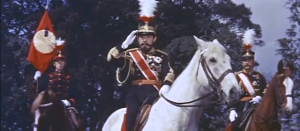
Furthermore, the assessment that Akira Kurosawa was Japan’s commercially most successful filmmaker appears to be based more on wishful thinking than reality. In fact, not a single Kurosawa film occupied the first place at the annual Top Ten rankings during the 1950s. “Seven Samurai”, for example, ranked third behind Tatsuo Osone’s “Chushingura” adaptation and Hideo Oba’s third part of his highly regarded “What is your name?” trilogy. With box office earnings of ¥198 million Kurosawa’s next big blockbuster, “Throne of Blood”, was the second most successful film of the year 1957.
However, Sadatsugu Matsuda’s “Port of Honor” was much more successful, which, grossing more than ¥353 million and was the great hit of that year. Ultimately, Kuroswa may certainly have been a successful filmmaker, but based on the commercial success of his films, it would be wrong to describe the 1950s as “The Age of Kurosawa” or that of his company, Toho. On the contrary, the 1950s belonged to the Toei jidaigeki and its leading director, Sadatsugu Matsuda.
A director as prolific as he is unknown. Before somebody took the time to translate his name properly, he was known as either Sadaji Matsuda or Teiji Matsuda in the West. During his more than 40 years as a director, he made at least 167 films, only 48 of whom are listed in the IMDb, “the most complete movie database in the world”.
In addition, he had his heyday in that period, in which the Toei Company conquered the Japanese film market with their trademark Toei goraku. A genre that is passionately despised by most critics. In 1959, Donald Richie, for example, described the audience for such films as having “no idea whatever of the meaning of the words quality or intelligence (…).”
This writing marks the first attempt to deal with Matsuda’s oeuvre. While Sadatsugu Matsuda could hardly be described as an artist, his unprecedented successful career is the criterion for reassessing his work. Matsuda was a director whose career always remained closely connected to his studio, who never developed a signature style and dutifully churned out every film assigned to him by his film studio. He was a classic company man, which was precisely the reason why he became the most successful filmmaker of the 1950s.
Who was Sadatsugu Matsuda? Matsuda was born in 1906 in Kyoto. An illegitimate son of Shozo Makino, often called “The Father of Japanese Film”. During the early 20th century, Makino’s kyugeki, primitive historical films that closely imitated the stylistics of the Kabuki theater, gained huge popularity with the Japanese public.
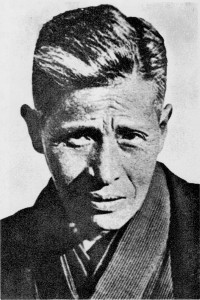
The main actor of these films, Matsunosuke Onoe, was subsequently named the first great star of Japanese cinema. In the 1920s, Makino ended his collaboration with the aged Onoe. He founded his own film studio, “Makino Educational Film Studios,” and became a notable avant-garde producer who launched the careers of major stars like Tsumasburo Bando, Chiezo Kataoka, or Ryunosuke Tsukigata. In the beginning, however, Makino’s production company was poor and couldn’t even afford proper staff or equipment.
Thus, Makino’s son Masahiro and his daughter Tomoko became prime actors in the early days of “Makino Educational Film Studios”. After graduating from junior high school, Sadatsugu Matsuda joined his father’s production company as a camera assistant. In 1925, he was promoted to full-fledged cinematographer. He shot films for Makino contract directors like Buntaro Futagawa, Mokushi Katsumi, or Saichiro Matsumoto before he changed profession and became a motion picture director for his father’s company in 1928.
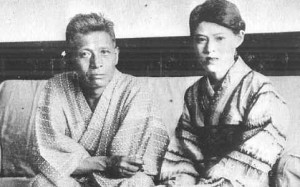
Like his father, Matsuda specialized in helming period features, often starring youth idol Toichiro Negishi (1899 – ?). These films were modeled on the success of the shinkokugeki (“New National Drama”), an important theater troup that had given Shozo Makino the impetus to revolutionize the period film with more cinematic techniques and lightning-quick sword fights. But Matsuda was also adept at comedy, directing films like “The Goronbo’s Story” (Muriyari Sanzengoku, 1929), said to have been an effective combination of nonsensical comedy and period drama.
Nevertheless, his work was somewhat overshadowed by that of his half-brother Masahiro Makino (1908 – 1993). Having been a noted child actor since age four, Masahiro had become a director for his father’s company in 1926. He teamed up with screenwriter Itaro Yamagami and cinematographer Minoru Miki to create many praised masterpieces of jidaigeki. Their films “Samurai Town, Story One: Beautiful Quarry” (Roningai: Daiichiwa Uusukushiki emono, 1928) and “Beheading Place” (Kubi no za, 1929) won consecutive number one spots in Kinema Junpo’s annual Top Ten ranking.
Around the same time, Matsuda met Chikueda, sometimes also credited as Tsukie, Matsuura (1907 – 1999), a talented Makino actress who had performed so viciously what could have been Japanese cinema’s first female fight scene in Masahiro Makino’s “Sozenji Baba” (1928). Matsuura and Matsuda got engaged and, in 1932, married.
By then, Shozo Makino had succumbed to heart failure at age 50. One year before, Makino’s company was already dwindling having experienced the walk-out of several of its biggest names, including Chiezo Kataoka and Chozaburo Arashi (later known as Kanjuro Arashi). With Makino’s death in 1929, the company struggled for four more years and promptly went out of business.
After having completed Makino’s last unfinished film, “Raiden” (1928), starring his own half-brother, Masahiro, in the lead role, Matsuda left the sinking ship and became a freelancer directing films for companies such as Nikkatsu, Teikoku Cinema, and Shinko Cinema. Today, most of his prewar films seem to be incomplete or lost. An 18 minutes fragment of “Raiden” remains the only extant legacy of Matsuda’s days at his father’s company.
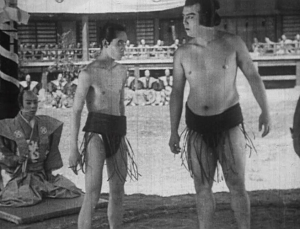
During the war, Matsuda directed several propaganda pieces. However, his career didn’t fully flower until after the war. In 1945, Japan surrendered and fell into the hands of the American occupation forces under the leadership of General Douglas MacArthur. During the years of occupation, jidaigeki were outlawed as remnants of Japanese feudalism. Period film stars had to trade the sword of a tateyuki (“heroic leading man”) for the gun of a brave private investigator or fierce detective.
Ironically, it was in this environment when Sadatsugu Matsuda made his first breakthrough as a director. In 1946, he directed the first “Tarao Bannai” film. Until 1960, no less than ten sequels should follow, eight of them directed by Matsuda, each of them a smash hit at the box office. Indeed, during the early postwar years “Tarao Bannai” literally dominated the industry.
Starring Chiezo Kataoka, already a major jidaigeki star since the late 1920s, as heroic private investigator Tarao Bannai, the detective series centered around the adventures of the title character who fought crime with seven different disguises and superior marksmanship. While the individual films in the series may be largely forgotten, the character of Tarao Bannai remains popular in Japan today and has enjoyed countless references in comic books, animated programs, or TV series.
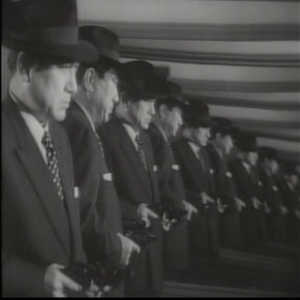
While immensely successful, “Tarao Bannai” also proved crucial for the path of Matsuda’s later career. In 1950, Chiezo Kataoka, having become the greatest star of the 1940s, co-founded Toei Kabushiki-gaisha, better known under its abbreviation of Toei, soon to become Japan’s leading motion picture company. After having directed four “TaraoBannai” films for Daiei, Matsuda was invited by Kataoka to join him to his new production company.
As an experienced veteran journeyman director, Matsuda initially enjoyed a certain star status. While directing more “Tarao Bannai” films for Toei, he emerged as the studio’s leading director of Toei’s trademark jidaigeki, especially if they starred the seasoned jidaigeki giants Utaemon Ichikawa and Chiezo Kataoka. During the following decade, Matsuda should direct hit after hit, seeming almost unstoppable at the box office.
1955 he achieved his first number-one spot at the annual box-office results. “Warriors of Ako” (Ako roshi: Ten no maki, chi no maki, 1955), a retelling of Japan’s famous legend of the 47 ronin, earned more than ¥313 million in revenues, more than ¥100 million more than Nobuo Nakamura’s “A Tale of Shuzenji” (Shuzenji monogatari, 1955), the second highest-grossing film of the year standing at “measly” ¥183 million. Until the end of the 1950s, six more films were among the highest-grossing of their respective year, among them especially his acclaimed “Jirocho” trilogy has to be mentioned.
With Kataoka portraying Jirocho, the eponymous medieval gambler and oyabun (“yakuza boss”) of the Tokaido road, all films in the series were tremendously successful. The aforementioned first part, “Port of Honor” (Ninkyo shimizu minato, 1957) was the only film to surpass “Throne of Blood” in revenues, part two, “A Chivalrous Spirit” (Ninkyo tokaido, 1958), ranked seventh at the annual Top Ten and “Road of Chivalry” (Ninkyo nakasendo, 1960) once again became the most successful Japanese film of the year.
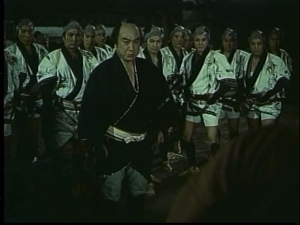
At the end of the decade, Matsuda’s six Top Ten hits alone had grossed over two billion yen, at least one billion more than every other director’s. However, as Toei’s bread and butter, Matsuda was also put in charge of directing the company’s most viable film series. Thus, the director also shot four of the five films of matinee idol Ryutaro Otomo’s “Tange Sazen” series (1958 – 1962), more “Tarao Bannai” films, and all eight films of the “Shingo” series (1959 – 1963) starring Hashizo Okawa as young samurai Shingo Aoi. From their respective number of sequels, one can safely assume that all of these film series were highly successful.
Furthermore, at a breakneck pace of roughly ten films each year, Matsuda emerged not only as a constant hit maker, but also as one the most productive directors of the decade. Thus, it can be claimed that Matsuda, this forgotten and neglected company man, was the financially most successful director of the 1950s, “The Golden Age of Japanese Cinema”.
The reason for this can be attributed to Toei’s typical company product. After having opened its gates, Toei soon specialized in producing low-budget jidaigeki. Toei jidaigeki was mass-produced on a weekly basis, mostly shot in less than two weeks. It was intended as lightweight family entertainment, completely lacking the grim atmosphere, violent swordplay, and thoughtfulness of more earnest genre colleagues.
Instead, the usual Toei jidaigeki is distinguished by rather loose plot threads, low-brow humor and borrowing its formulaic narrative from famous feudal tales of Japanese folklore. Indeed, with its reliance on clearly formulated black-and-white drawings of their central characters and a glorification of feudal concepts of honor, the Toei jidaigeki was, in the words of film scholar Mitsuhiro Yoshimoto, “(…) an atavistic return to kyugeki (…) a technologically advanced version of the primitive cinema exemplified by the films of kyugeki superstar Matsunosuke Onoe.”
The production method of the Toei jidaigeki is also noteworthy for abolishing the star status of the director in favor of an actor-based system. True, Toei also employed their fair share of prestige directors, most importantly Tadashi Imai and legendary pioneer Tomu Uchida, yet these filmmakers made celebrated festival favorites and rarely touched the world of the Toei jidaigeki.
Instead, the usual Toei jidaigeki director was an anonymous hack, his style strictly formulated by company policy. The actors were the true ticket sellers of Toei. This was exactly the reason for Toei’s domineering status at the box office. With lucrative deals, the company lured in some of the most famous of all jidaigeki stars and countless promising newcomers on their way to the top.
Seasoned audience members could marvel at the magnifying presence of such legends as Utaemon Ichikawa, Chiezo Kataoka, Denjiro Okochi, or Ryunosuke Tsukigata, often starring together in one film to provide several all-star Toei features every month.
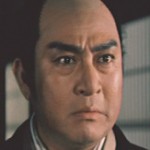
Directed by seasoned genre directors such as Matsuda, Masahiro Makino, or Yasushi Sasaki, these films usually functioned as the main feature of a weekly double or triple bill. They ensured the attendance of the older generations drawn into the seats by the presence of their favorite childhood heroes.
Younger Toei fans stayed for the lower half of the double bill, constituted by one or two one-hour-long serials. These so-called Toei gorakuhen (“Toei Entertainment Edition”) served to introduce promising young matinee idols such as pop queen Hibari Misora, Kinnosuke Nakamura, Hashizo Okawa, or Chiyunosuke Azuma, who soon enjoyed a cult-like following by millions of teenage girls.
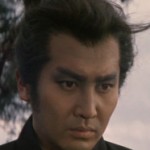
Even the most hackneyed of Toei’s program features usually made their money back with a large profit margin. Thus, despite being arguably Japan’s most successful filmmaker of all time, most of Matsuda’s films were low-budget features.
Even his more prestigious efforts usually lagged far behind in scale than comparable prestige pictures of other production companies. To underline this great irony of Matsuda’s career, being both the most important director of his studio and representing the most humble of all company man, we have to take a look at Matsuda’s probably most significant picture, Japan’s first feature-length widescreen film in color.
It was a pioneering production that, at the same time, was the background of a fierce race between two competing studios, Toei and Shintoho. A few years earlier, Shintoho had begun the epochal production of “The Emporer Meiji and the Great Russo-Japanese War,” supposed to be the most expensive and Japan’s first widescreen film ever made.
Before the production could wrap up, however, another feature premiered on the big screen. It is a slight comedy about a wakasama (“young lord”) pretending to be a commoner and finding the love of his life in the process, having the unassuming title “The Lord Takes A Bride” (Otorijo no hanayome, 1957). It was the work of Sadatsugu Matsuda and Japan’s first full-color, feature-length widescreen film.
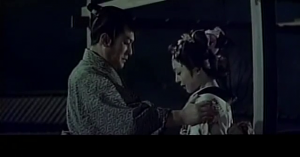
Eventually, Shin Toho’s film should become the highest-grossing Japanese film of the 1950s, but Toei could collect all the credit for pioneering the new technique. Toei, the richest studio in Japan, had won the race against Shintoho, the poorest of Japan’s “Big Six”, by producing the most forgettable milestone of cinema ever conceived.
While Hollywood’s first widescreen film had its hero come to terms with having witnessed the death of Jesus, the hero of “The Lord Takes A Bride” faces his biggest obstacle when confronted with his lover’s affinity for squid, whose taste the young lord detests.
Sadatsugu Matsuda was a giant of cinema, making mostly low-budget features. Millions saw his films, yet nobody took the time to remember his name. His style ensured certain success, yet was solely that of his studio. He would have been rich if he had been a producer, but as a director, he was determined to be all but forgotten.
Despite these admittedly harsh words, Matsuda was anything but a bad director. Even his most forgettable films were at least entertaining and always well-crafted. Occasionally, he also made good films, sometimes even great ones. One is “Ako Roshi” (1961), yet another adaptation of Japan’s “Chushingura” and arguably Matsuda’s masterpiece.
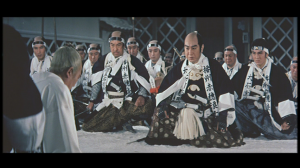
Shot in the most beautiful of color photography, written by excellent screenwriters Kaneto Shindo and Hideo Oguni, elaborately mounted and beautifully acted by a simply astonishingly large all-star cast, “Ako Roshi” grossed ¥435 million, making it the second highest-grossing film of 1961. This time, however, Kurosawa took the first spot at the annual box-office Top Ten.
Indeed, in 1961 and 1962 two Kurosawa films became the highest-grossing features of their respective year, while Sadatsugu Matsuda had to be satisfied with the second respectively third spot. In the end, the early 1960s marked the true beginning of the age of Kurosawa and the end of the Toei jidaigeki.
The political climate in Japan had changed. Student demonstrations resulted in violent clashes with the police, and terrorist groups, both left and right, emerged and threw Japan into a state of utter confusion. Toei’s teenage audience had finally grown up and began rallying in the streets.
Witnessing the declining success of their trademark company product, Toei tried to counter the audience’s demand for fresh and controversial material by producing several zonkoku jidaigekis. Modeled on such milestones as “Yojimbo” (1961) and “Harakiri” (1962) and shot in somber black and white, these so-called “cruel period films” tried to lure the audience with gritty and violent depictions of the injustices of feudal Japan.
Their production marked in many ways a renaissance of the Toei jidaigeki. Seeing their star status in imminent danger, actors put more effort into their work, while younger Toei directors took the opportunity to escape their fate as providers of lightweight matinee fare, which often resulted in excellent performances and well-crafted films.
But it was once again Sadatsugu Matsuda who delivered the defining work of that era. Starring Ryutaro “Tange Sazen” Otomo, he directed “Duel of Blood and Sand” (Chi to suna no keto, 1963), which surprisingly managed to be both highly entertaining entertainment with great action scenes and clever plot twists as well as being a grim and provocative study of feudal hypocrisy, modeled on Kurosawa’s “Seven Samurai”.
In the end, however, Matsuda rather chose the benefits of retirement instead of becoming part of this new mode of jidaigeki production.
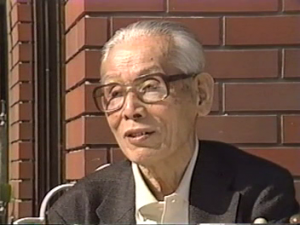
In 1969, he made a shortlived attempt at restarting his career by directing the first two “Mekura no Oichi” films, a notorious “Zatoichi” rip-off, but left the cinema world forever. He died in 2003 at the venerable age of 97.
Sadatsugu Matsuda was a hack, an unsung craftsman, and remains a Japanese cinema giant. By the end of the 1960s, his Top Ten entries alone had broken the 3 billion yen mark, a record which should not be broken until the 1970s.
Acclaimed directors such as Mizoguchi, Imai, Kurosawa, or Ozu may have directed masterpieces. Still, it remains ever more important to note that their “Golden Age of Japanese Cinema” wouldn’t have been possible without the backing of the big studios, which in turn were fully dependant on the efficiency of their anonymous company men whose work was the fuel that kept the machines running and brought “The Golden Age of Japanese Cinema” to life.
Also Read:
